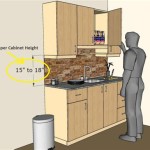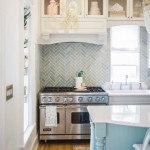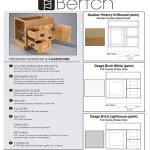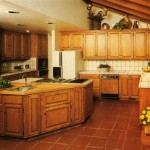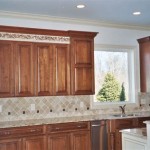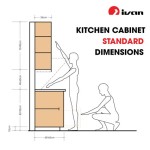Should You Repaint or Replace Kitchen Cabinets? A Comprehensive Guide
Kitchen cabinets are a significant element in determining the overall aesthetics and functionality of a kitchen. They represent a considerable investment, and when considering a kitchen renovation, the decision to repaint or replace them is a crucial one that necessitates careful evaluation. Both options offer distinct advantages and disadvantages, and the optimal choice hinges on a variety of factors related to budget, the condition of the existing cabinets, desired aesthetic changes, and the homeowner's long-term goals.
This article provides a comprehensive examination of the factors to consider when deciding whether to repaint or replace kitchen cabinets. It explores the cost implications, time commitment, structural considerations, design possibilities, and impact on home value associated with each option. By understanding these aspects, homeowners can make an informed decision that aligns with their specific needs and constraints.
Evaluating the Condition of Your Existing Cabinets
A thorough assessment of the current state of the cabinets is the first step in determining whether repainting or replacement is the appropriate course of action. The structural integrity of the cabinets is paramount. If the cabinets are structurally sound, repainting becomes a more viable option.
Examine the cabinet boxes and frames for signs of damage such as water damage, warping, or delamination. Water damage, particularly around the sink or dishwasher, can weaken the wood and compromise the cabinet's stability. Warping occurs when wood is exposed to moisture or uneven temperatures, resulting in a distorted shape. Delamination refers to the separation of layers in plywood or other composite materials. If any of these issues are present, replacing the affected cabinets or the entire set might be a more prudent long-term solution. Extensive repairs can be costly and may not fully restore the cabinet's original strength and appearance.
Assess the condition of the cabinet doors and drawer fronts. Minor imperfections like scratches, dents, or faded finishes can usually be addressed with repainting. However, if the doors are significantly damaged, warped, or have loose veneer, replacement doors or entirely new cabinets may be necessary. Replacing just the doors and drawer fronts, known as refacing, can be a cost-effective alternative to a complete cabinet replacement if the existing cabinet boxes are in good condition. Refacing involves applying new veneers to the existing cabinet boxes and installing new doors and drawer fronts.
Inspect the hinges and drawer slides. Faulty or outdated hardware can detract from the functionality and aesthetics of the cabinets. Replacing hinges and drawer slides is a relatively inexpensive and straightforward task that can significantly improve the performance of existing cabinets. However, if the hardware mounting points are damaged or stripped, it may indicate a larger problem with the underlying cabinet structure.
Cost Analysis: Repainting vs. Replacing
Budget constraints often play a pivotal role in the decision to repaint or replace kitchen cabinets. Repainting is generally a more cost-effective option than replacement, but the actual cost varies based on the size and complexity of the project, the type of paint used, and whether the homeowner chooses to DIY or hire a professional.
The cost of repainting includes expenses for materials such as primer, paint, brushes, rollers, sandpaper, and cleaning supplies. Surface preparation is a critical step in achieving a professional-looking finish, and it may involve filling holes, patching imperfections, and sanding the surfaces to create a smooth base for the paint. If the homeowner hires a professional painter, the labor costs will also need to be factored in. Professional painting services typically charge by the square foot or by the cabinet, and the cost can vary depending on the painter's experience and the complexity of the job.
Replacing kitchen cabinets is a significantly more expensive undertaking. The cost of new cabinets depends on the materials used, the style of the cabinets, and whether they are stock, semi-custom, or custom-made. Stock cabinets are the most affordable option, but they offer limited customization options. Semi-custom cabinets provide more flexibility in terms of size, style, and features, but they are more expensive than stock cabinets. Custom cabinets are the most expensive option, but they allow for complete customization to meet the homeowner's specific needs and preferences.
In addition to the cost of the cabinets themselves, replacement also involves expenses for demolition, installation, and potential modifications to plumbing or electrical systems. Removing existing cabinets can be a labor-intensive process, and it may require specialized tools and equipment. Installation typically involves leveling the cabinets, securing them to the walls, and connecting plumbing and electrical fixtures. If the new cabinets have a different configuration than the old cabinets, it may be necessary to relocate plumbing or electrical lines, which can add to the overall cost.
Consider also the potential for hidden costs. During demolition, unexpected issues like asbestos or mold might be discovered, requiring remediation before the new cabinets can be installed. Such unforeseen problems can significantly increase the overall budget.
Aesthetic Considerations and Design Goals
The desired aesthetic changes are a critical factor in determining whether to repaint or replace kitchen cabinets. Repainting can refresh the look of existing cabinets, but it may not be sufficient if the homeowner desires a significant style change or a completely different kitchen layout.
If the homeowner is satisfied with the existing cabinet style and layout, repainting can be an effective way to update the color scheme and create a fresh, modern look. Repainting allows for a wide range of color choices, from classic neutrals to bold, contemporary hues. It can also be used to create different finishes, such as a distressed look or a high-gloss sheen. Choosing the right paint and application technique can transform the appearance of the cabinets without the expense and disruption of replacement.
However, if the homeowner wants to change the style of the cabinets, such as transitioning from traditional raised-panel doors to sleek, modern slab doors, replacement is usually the best option. Replacing cabinets allows for a complete design overhaul, including changes to the cabinet configuration, door styles, hardware, and countertops. It also provides the opportunity to incorporate new features, such as pull-out shelves, soft-close hinges, and built-in organizers.
Consider the overall design of the kitchen and how the cabinets contribute to the overall aesthetic. If the existing cabinets are dated or clash with the rest of the kitchen design, replacement may be necessary to achieve a cohesive and harmonious look. Replacing cabinets also offers the opportunity to improve the functionality of the kitchen by optimizing the layout and storage space. For example, adding a kitchen island or pantry can significantly enhance the usability of the kitchen.
When considering aesthetic changes, factor in the long-term trends and preferences. A trendy color or style may seem appealing initially, but it could become dated quickly. Choosing classic and timeless designs can help ensure that the kitchen remains stylish and functional for years to come.
Time Commitment and Disruption
The time commitment and disruption associated with repainting or replacing kitchen cabinets are significant factors to consider, especially for homeowners who rely heavily on their kitchen for daily meals and activities.
Repainting cabinets can typically be completed in a few days to a week, depending on the size of the kitchen and the complexity of the project. The process involves removing the cabinet doors and drawer fronts, cleaning and sanding the surfaces, applying primer and paint, and reassembling the cabinets. While the cabinets are being repainted, the kitchen may be partially unusable, and it may be necessary to set up a temporary cooking area in another part of the house.
Replacing kitchen cabinets is a much more time-consuming and disruptive project. It can take several weeks or even months to complete, depending on the availability of the cabinets, the complexity of the installation, and the need for any plumbing or electrical modifications. During the replacement process, the kitchen will be completely unusable, and the homeowner will need to rely on alternative cooking arrangements. The demolition and installation process can also generate dust and noise, which can be disruptive to other areas of the house.
If time is a major constraint, repainting may be the more appealing option. However, if the homeowner is willing to invest the time and effort required for replacement, the long-term benefits of a completely renovated kitchen may outweigh the inconvenience.
Impact on Home Value
Both repainting and replacing kitchen cabinets can impact the value of a home, but the extent of the impact depends on several factors, including the condition of the existing cabinets, the quality of the workmanship, and the overall aesthetic appeal of the renovation.
Repainting cabinets can increase home value by refreshing the look of the kitchen and making it more appealing to potential buyers. A fresh coat of paint can make the kitchen look newer and cleaner, which can enhance its overall appeal. However, repainting may not significantly increase the home's value if the existing cabinets are in poor condition or if the paint job is not professionally done. A poorly executed paint job can actually detract from the home's value.
Replacing kitchen cabinets can have a more significant impact on home value, especially if the new cabinets are of high quality and complement the overall design of the house. New cabinets can transform the look of the kitchen and make it more modern and functional, which can increase its appeal to potential buyers. However, replacing cabinets is a significant investment, and it is important to ensure that the renovation is done properly to maximize its impact on home value. Choosing quality materials, hiring professional installers, and ensuring that the new cabinets are consistent with the overall style of the house are all important factors to consider.
Consider the neighborhood and the target market for the home. In a high-end neighborhood, potential buyers may expect a fully renovated kitchen with premium cabinets. In a more modest neighborhood, a simple repaint may be sufficient to increase the home's appeal. Researching comparable homes in the area can provide insights into the types of kitchen renovations that are most likely to increase home value.
Ultimately, the decision to repaint or replace kitchen cabinets is a personal one that should be based on a careful evaluation of the factors discussed above. By considering the condition of the existing cabinets, the budget, the desired aesthetic changes, the time commitment, and the impact on home value, homeowners can make an informed decision that aligns with their specific needs and goals.

How To Know If You Should Repaint Or Replace Your Kitchen Cabinets In Denver Metro Co Imhoff Painting Company

Repaint Or Replace Kitchen Cabinets What Should You Do Paintrite Pros

Should You Paint Or Replace Your Kitchen Cabinets

Should You Replace Or Repaint Your Kitchen Cabinets

Cabinet Refacing Process And Cost Compared To Painting

Should You Get A Professional To Paint Or Replace Kitchen Cabinets

Should I Paint My Kitchen Cabinets Lily Ann

Should You Paint Or Replace Your Kitchen Cabinets In Greater Boston

Should I Paint My Kitchen Cabinets

Here S When It Best To Replace Reface Or Repaint My Kitchen Cabinets Woodiwiss Painting

